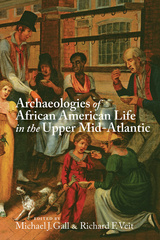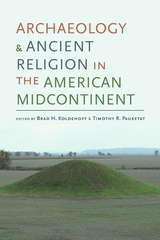Rock Art in an Indigenous Landscape
From Atlantic Canada to Chesapeake Bay
By Edward J. Lenik and Nancy L. Gibbs
University of Alabama Press
Examines a host of rock art sites from Nova Scotia to Maryland
Rock art, petroglyphs, and pictographs have been made by indigenous peoples for thousands of years. Images have been found on bedrock, cliff faces, ridge tops, and boulders and in rock shelters. Some rock surfaces are covered with abstract and geometric designs such as concentric circles, zigzag lines, grids, and cross-hatched and ladder-like patterns. Others depict humans, footprints and handprints, mammals, serpents, and mythic creatures. All were meticulously pecked, incised or painted. This ancient art form connects us to Native Americans’ past, traditions, world views, and sacred places.
Rock Art in an Indigenous Landscape: From Atlantic Canada to Chesapeake Bay is the culmination of the research of preeminent rock art scholar Edward J. Lenik. Here, he profiles more than 64 examples of rock art in varied locations from Nova Scotia to Maryland. Chapters are organized geographically and lead the reader through coastal sites, rivers and streams, lakes and ponds, and upland sites.
Lenik discusses the rock art examples in the context of the indigenous landscape, noting the significance of the place of discovery. Coverage includes a meticulous description of the design or motif and suggestions of time frame, artist-makers, and interpretations. Where possible, indigenous views on the artifacts enrich the narrative. Other invaluable elements are a discussion of how to identify indigenous rock art; a glossary of rock art terms and features and archaeological culture periods; an up-to-date bibliography; and an appendix of a number of reported but unconfirmed petroglyph sites in the regions.
Rock art, petroglyphs, and pictographs have been made by indigenous peoples for thousands of years. Images have been found on bedrock, cliff faces, ridge tops, and boulders and in rock shelters. Some rock surfaces are covered with abstract and geometric designs such as concentric circles, zigzag lines, grids, and cross-hatched and ladder-like patterns. Others depict humans, footprints and handprints, mammals, serpents, and mythic creatures. All were meticulously pecked, incised or painted. This ancient art form connects us to Native Americans’ past, traditions, world views, and sacred places.
Rock Art in an Indigenous Landscape: From Atlantic Canada to Chesapeake Bay is the culmination of the research of preeminent rock art scholar Edward J. Lenik. Here, he profiles more than 64 examples of rock art in varied locations from Nova Scotia to Maryland. Chapters are organized geographically and lead the reader through coastal sites, rivers and streams, lakes and ponds, and upland sites.
Lenik discusses the rock art examples in the context of the indigenous landscape, noting the significance of the place of discovery. Coverage includes a meticulous description of the design or motif and suggestions of time frame, artist-makers, and interpretations. Where possible, indigenous views on the artifacts enrich the narrative. Other invaluable elements are a discussion of how to identify indigenous rock art; a glossary of rock art terms and features and archaeological culture periods; an up-to-date bibliography; and an appendix of a number of reported but unconfirmed petroglyph sites in the regions.
Lenik and Gibb’s volume, Rock Art in an Indigenous Landscape, gives voice to the Native American rock art of the northeastern United States and adjacent Canadian provinces. It is a major contribution to the literature on this topic and a must-have book for rock art researchers.’
— Richard F. Veit, coeditor of Archaeologies of African American Life in the Upper Mid-Atlantic
The authors’ research and devotion to rediscovering and contextualizing these images give the reader a sense of curiosity and adventure. This volume is straightforward and would appeal to a general audience. It left me looking more closely at rocks in my area.’
—American Antiquity
Edward J. Lenik is president and principal investigator of Sheffield Archaeological Consultants and an authority on rock art in the Northeast and Mid-Atlantic. He is author of Picture Rocks: American Indian Rock Art in the Northeast Woodlands; Making Pictures in Stone: American Indian Rock Art of the Northeast; and Amulets, Effigies, Fetishes, and Charms: Native American Artifacts and Spirit Stones from the Northeast.
Nancy L. Gibbs is an artist, writer, and rock art researcher. She is a longtime collaborator and coauthor of Edward J. Lenik.
Nancy L. Gibbs is an artist, writer, and rock art researcher. She is a longtime collaborator and coauthor of Edward J. Lenik.
List of Motif Boxes
Preface
Acknowledgments
Introduction
1. Rock Art along the Coast: Atlantic Canada to Chesapeake Bay
2. Rock Art Near Rivers and Streams
3. Rock Art at Lakeside
4. Upland Sites: Petroglyphs on Boulders, Bedrock, and Ledges
5. Finding Rock Art: Considerations in Identifying Indigenous Rock Art
6. Thoughts on Native American Rock Art
Appendix: Native American Petroglyph Sites (Reported but Unconfirmed)
Glossary
References Cited
Index










